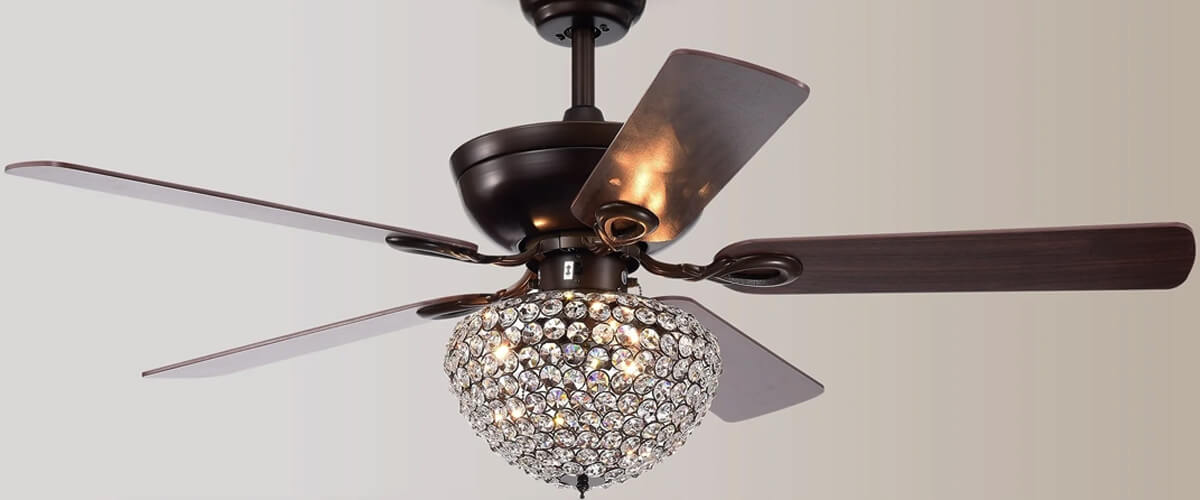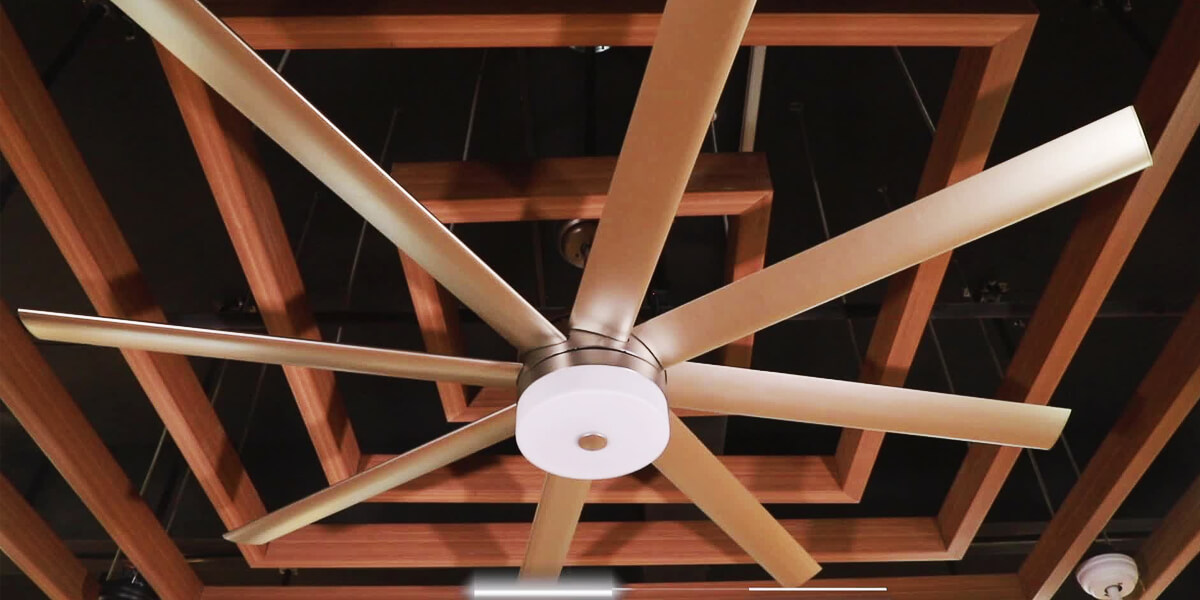Ceiling fans are indispensable for maintaining a comfortable indoor environment, and one critical aspect to consider is the variety of available ceiling fan blade types. Choosing the right blade type can make a considerable difference in both a fan’s ability to circulate air effectively and its potential to complement the style of a room.
In today’s market, homeowners face a plethora of fan designs, materials, and finishes. Navigating these options can be daunting, particularly when balancing form and function. Fortunately, my expertise can help. In this article, I’ll guide you through ceiling fan blade materials, discussing their pros and cons, so you can make an informed decision about the ideal material for your needs.
Choice of material for ceiling fan blades
Ceiling fans are crafted from a wide array of materials, each with its unique characteristics and benefits. With numerous options available, it’s essential to understand their properties and applications. In this section, we’ll examine the main materials used for ceiling fan blades so that you can make the right choice.
Wood

Wooden fan blades are a popular choice for homeowners seeking a touch of elegance and warmth in their interior design. Crafted from various wood types, such as plywood, solid hardwood, or furniture-grade veneer, these blades offer a natural, classic appearance that can enhance a room’s aesthetic.
One of the primary advantages of wooden blades is their style versatility, with options ranging from sleek, modern designs to intricately carved, traditional patterns. Moreover, wood’s natural insulation properties can help reduce energy consumption during colder months by circulating warm air more effectively.
However, there are some drawbacks to consider. Wooden blades can be more expensive than other materials and require regular maintenance to keep them looking pristine. Over time, wood can also be susceptible to warping and cracking, particularly in humid environments, which will impact the fan’s performance and aesthetics.
Metal

When it comes to modern aesthetics and long-lasting durability, metal blade ceiling fans are a sought-after choice. Commonly made from materials such as aluminum, stainless steel, or different metal alloys, these blades provide a polished, refined appearance that harmonizes with diverse interior styles.
One of the key benefits of these blades is their sturdiness and longevity, making them ideal for outdoor spaces or humid environments where alternative materials might falter. Furthermore, metal blades maintain their shape well, ensuring optimal fan performance throughout their lifespan. Cleaning and maintaining them is a breeze, as they only need occasional wiping to retain their shine.
Conversely, metal blades have some drawbacks, such as generating more noise compared to wooden or plastic options when operating at elevated speeds. Additionally, due to metal’s heat-conductive nature, these blades may contribute to reduced energy efficiency in hotter months by reintroducing heat into the room.
Plastic or ABS

If you need a lightweight, cost-effective alternative, plastic or ABS ceiling fan blades are an excellent choice. Acrylonitrile Butadiene Styrene (ABS) is a sturdy and versatile thermoplastic material that offers a wide range of design possibilities, from simple and minimalist to complex and exciting patterns.
A key advantage of ABS blades is their affordability, making them an attractive option for budget-conscious homeowners. Additionally, plastic models are lightweight and resistant to warping or sagging, ensuring consistent performance over time. Their resistance to moisture and humidity also makes them a suitable option for outdoor use or in damp environments, such as bathrooms or laundry rooms.
But while ABS blades are quite durable, they may not offer the same level of longevity as wood or metal ones. Plus, their appearance might not appeal to those who prefer the natural elegance of wood or the sleek sophistication of metal.
Other materials

While wood, metal, and ABS are the most common materials for ceiling fan blades, there are several other, less popular options available that cater to unique styles and preferences. These alternatives include wicker, canvas, and palm leaf, among others.
Wicker blades provide a natural, rustic charm and are well-suited for outdoor or coastal-themed spaces. Their woven structure allows for air circulation, but they may require additional maintenance to keep them clean and free of dust or debris.
Canvas blades, often made from weather-resistant fabric, offer flexibility in design and color. They can be an ideal choice for outdoor fans, as they are less susceptible to environmental damage. However, their durability may not match that of more conventional materials.
Palm leaf fan blades, crafted from natural or synthetic materials, bring a tropical flair to your space. They create a distinctive aesthetic that works well in beach houses or rooms with an island-inspired theme. These blades can be more challenging to clean due to their unusual shape and texture.
Although these alternative materials are not as widespread as conventional ones, they offer unique design elements and appeal to specific tastes or environments.
What material to choose for ceiling fan blades
When selecting an ideal material for your ceiling fan blades, it’s essential to consider factors such as aesthetics, durability, performance, and maintenance. The table below highlights the key features of each material and suggests scenarios in which they might be more suitable:
| Material | Key Features | Ideal For |
|---|---|---|
| Wood | Classic, versatile aesthetics; natural insulation | Traditional or modern interiors; indoor use |
| Metal | Durable, sleek, modern design; low maintenance | Indoor/outdoor use; contemporary spaces |
| ABS | Affordable, lightweight, moisture-resistant | Budget-friendly options; damp environments |
| Wicker | Rustic charm; unique texture | Outdoor or coastal-themed spaces |
| Canvas | Flexible design and color; weather-resistant | Outdoor fans; customizable aesthetics |
| Palm Leaf | Tropical flair; distinctive appearance | Beach houses; island-inspired interiors |
Carefully consider these aspects, and you’ll find the perfect ceiling fan blade material to enhance your space’s comfort and appeal.










![How Many Blades Should a Ceiling Fan Have? [3 vs 4 vs 5-Blade]](https://www.kennedyproductions.com/wp-content/uploads/2023/08/does-the-number-of-blades-on-a-ceiling-fan-matter-300x150.jpg)



